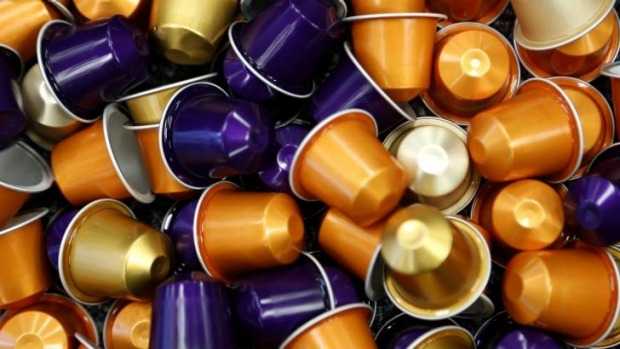OAK BROOK, IL, U.S. – Four industry experts leading the discussion surrounding compostable food packaging do some myth-busting while pointing to the technical and commercial realities in this recent webinar.
Myth-busting is a two-step process: First identify a mistruth about an assumption and then present the reality.
That dual process was front and center during a webinar organized by PAC NEXT, “Sorting Myth from Truth: The role of compostable packaging to increase waste diversion.”
The 60-minute-plus presentation on February 23 sought to bring some clarity to ambiguities surrounding compostable packaging and the key role it has in reducing both food waste and waste sent to landfill.
In fact, in instances where there are limited recycling options available and where other packaging options may be too complex or contaminated to recycle economically, compostable packaging may offer a net environmental benefit.
For some, like Sarah Martinez, the director of marketing for Eco-Products, the largest provider of environmentally optimized foodservice packaging including cups, containers and tableware, the goal is a zero-waste future.
That’s a heady goal regardless of location, but particularly in the United States where only 5% of wasted food is composted.
In a shining case study example Martinez presented, Eco-Products supplies 38 skus of foodservice packaging and tableware to Safeco Field, home of the Seattle Mariners baseball team, to meet the needs of up 47,800 fans attending each of 81 home games yearly. The stadium was one of the first professional sports teams to meet and exceed zero waste goals. Cedar Grove hauls and composts the stadium’s organics.
“We provide less than 20 landfill bins that are public facing so it’s more accurate to call us a two-bin system,” Martinez told Packaging Digest. “Our fans essentially have the option to either compost or recycle bottles and cans throughout the concourse.”
Pod perfected for composting
Solange Ackrill, is vp strategic planning & process innovation for Club Coffee, Toronto, which developed the world’s first Biodegradable Products Institute (BPI)-certified 100% compostable coffee pod that meets ASTM standards, the PǜrPod.
The pod is convenient, consumer-friendly, makes for easy cleanup and doesn’t need separation for composting of its 4 components—lid, ring, coffee grounds, filter— since the whole thing is composted. Ackrill noted that the PǜrPod offers 23% fewer Greenhouse Gas (GHG) emissions and that after use results in “good quality compost.”
Although a pod is “theoretically recyclable,” she said it would require a lot of engineering because a standard pod made of any recyclable material is too light and too small to efficiently recover.
She noted that the company had also assessed compostable films for use in multipack and packaged bundles, but “not all compostable films that have machinability and a barrier work.”
She also pointed to the need for companies to innovate and collaborate.
“Foodservice packaging turns into trash that results in land and ocean pollution,” said presenter Susan Thoman, vp corporate development, Compost Manufacturing Alliance. Thoman related the experiences of the professionally-run Cedar Grove composting site where a 60-day cycle produces “wonder mulch” that also conserves water.
One of her directives was this for effective composting: “We don’t want packaging and items that are only partially compostable,” she emphasized, “2% to 3% contamination is unsustainable and even 99% is unacceptable. Materials must be 100% compostable.”
Emphasis on industrial composting
A reoccurring topic during the webinar distinguished between industrially compostable and packaging and consumer or backyard composting. That’s an easy decision for Eco-Products’ Martinez.
“Commercial composting has the greatest potential to keep food scraps out of landfills,” she said, pointing to the New Plastics Economy position paper, which recommends “using compostable packaging for nutrient contaminated packaging.”
This “no separation, one-toss system” yields astonishingly good results: A BioCycle magazine study found that food scraps diverted along with compostable packaging saw a 72% composting rate.
Later in building on Martinez’ assertion, presenter Rhodes Yepsen, BPI executive director, stated that the organization is now focused on industrial composting that relies on a standard set of conditions vs. consumer/home/backyard methods subject to numerous variables including the weather.
For Yepsen, the largest growth hurdle for the composting market’s growth is a technical one more than anything else.
“Products and packaging are simultaneously one of the biggest barriers to and best solutions for effective composting,” he said.
BPI certification, which according to Yepsen has now been granted to some 7,000 items, is determined using ASTM tests (D6400 and D6868) for industrial methods. Components include disintegration (after 12 weeks); biodegradation/mineralization; and ecotoxicity levels that test for heavy metal residue.
“Not everything that meets the standards should be compostable,” Yepsen pointed out, “because composting may not be the best option.” He pointed to water bottles, which are made of highly recyclable PET, as an example.
Some considerations include: Does the item need disassembly to compost? Is there proper labeling?
“Consumers look for an easy way to get rid of things after use,” he said.
Certification is, however, just a starting point. “There is a need to build [industrial] composting infrastructure,” he said, “and more collaboration is always needed.”
The BPI website offers a Decision Tree Guide for composting.
In the Q&A that followed the formal presentations, Martinez provided an optimistic concluding remark. “It’s an exciting time to be working on the issue of compostable packaging,” she said. “There’s so much interest and I’m hopeful for the future.”
Rick Lingle

















